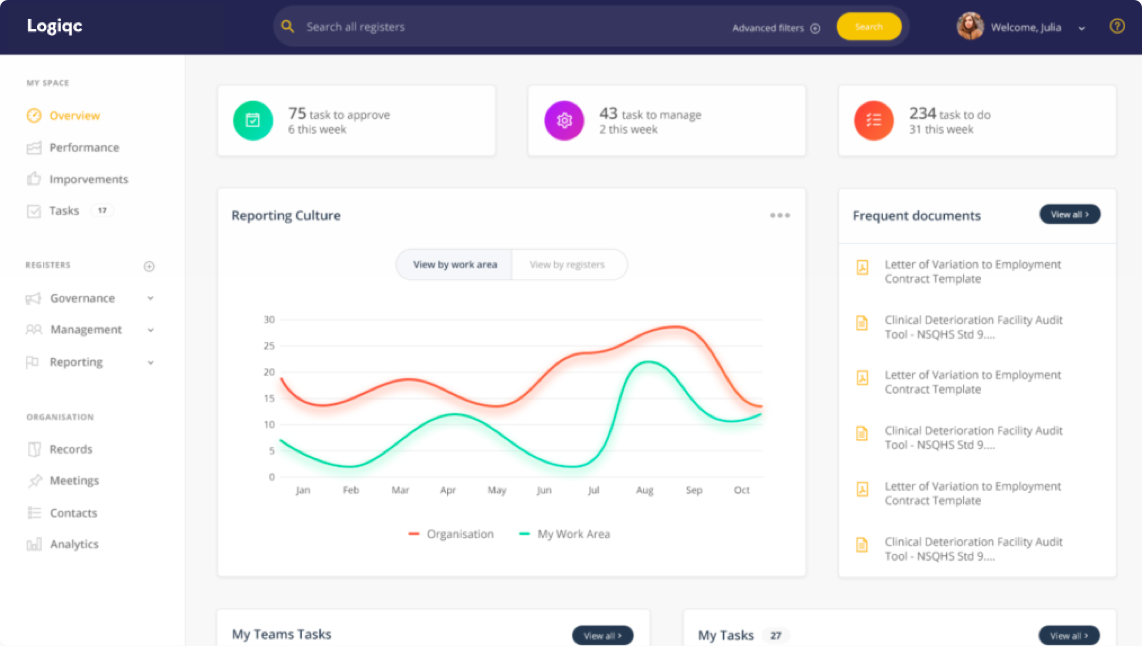Managing safety, quality, and risk is fundamental part of managing any practice. But finding the time to implement and maintain systems on the ground is not always so easy.
This is where systems are needed that are simple to use, cover off on your accreditation requirements and support all staff to contribute. The best systems become embedded in the every-day work processes of the organisation and not just ‘tacked on’ and extra things to do when time permits.
Here are excerpts from two common standards relevant to Australian day procedure services and GP practices.
For day procedure services: Key points about clinical risk management from the National Safety and Quality Health Service Standards
All hospitals and day procedure services and the majority of public dental services across Australia need to be accredited to the NSQHS Standards. Standard one of the NSQHS standard Governance and quality improvement systems requires that there are integrated systems of governance to actively manage patient safety and quality risks. Among other things, the NSQHS Standard requires you to:
- Implement a governance system that sets out the policies, procedures and/or protocols.
- Establish an organisation-wide quality management system that monitors and reports on the safety and quality of patient care and informs changes in practice.
- Ensure that the board, chief executive officer and/or other higher level of governance within a health service organisation takes responsibility for patient safety and quality of care.
- Implement training in the assigned safety and quality roles and responsibilities.
- Establish an organisation-wide risk management system that incorporates identification, assessment, rating, controls and monitoring for patient safety and quality.
- Read more at: http://www.safetyandquality.gov.au/our-work/accreditation-and-the-nsqhs-standards/
For GP’s: Key points about clinical risk management from the RACGP 4th edition standard
- There should be one member of the practice team with primary responsibility for clinical risk management systems
- Near misses and mistakes in clinical care occur in all general practices
- Practices need systems to recognise and analyse near misses and mistakes so solutions can be implemented to prevent their recurrence
- Solutions need testing to ensure they work effectively
- Deviations from standard clinical practice may be interpreted as deviations from practice which might reasonably be expected by the public or professional peers.
Read more at: RACGP





